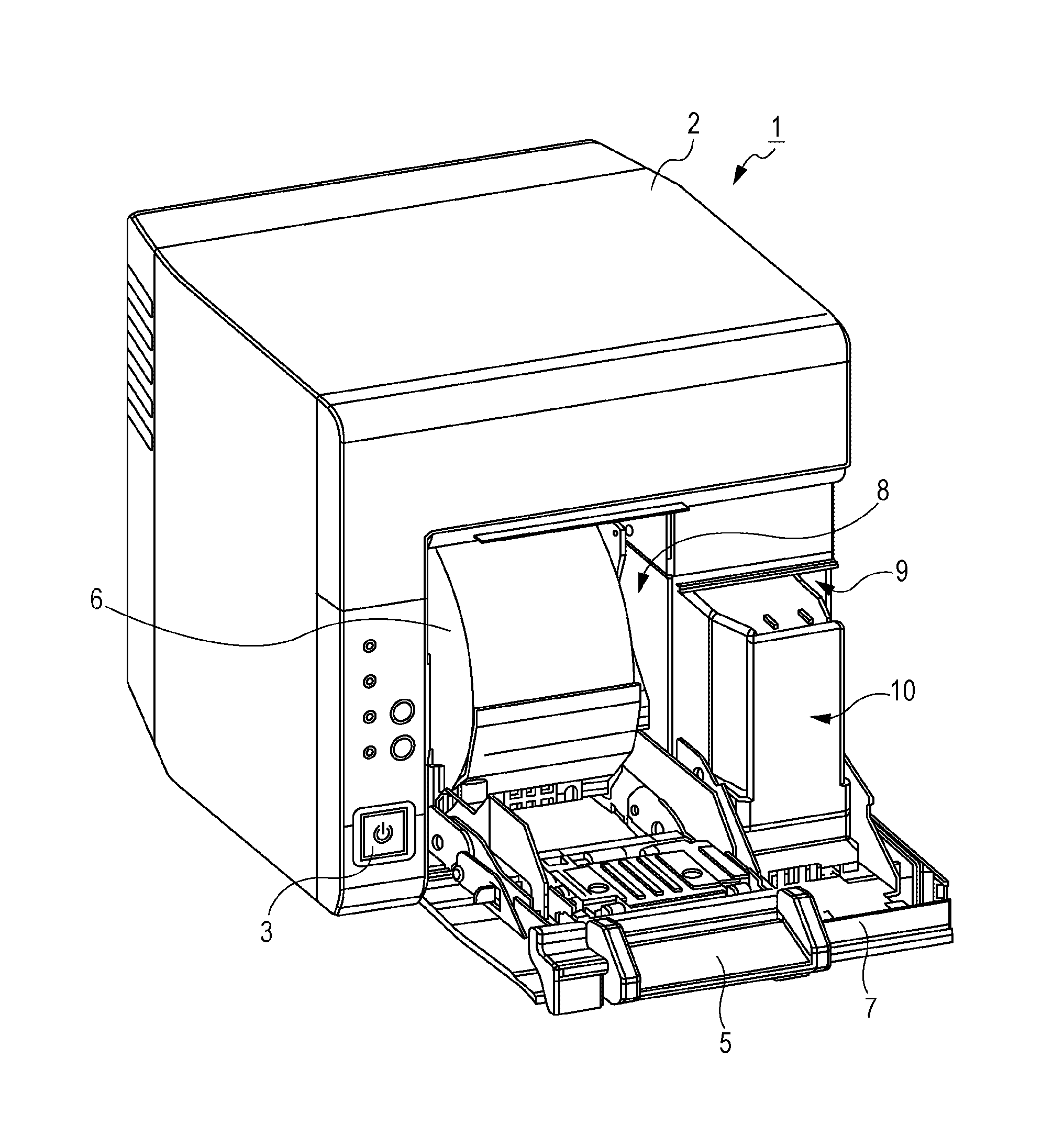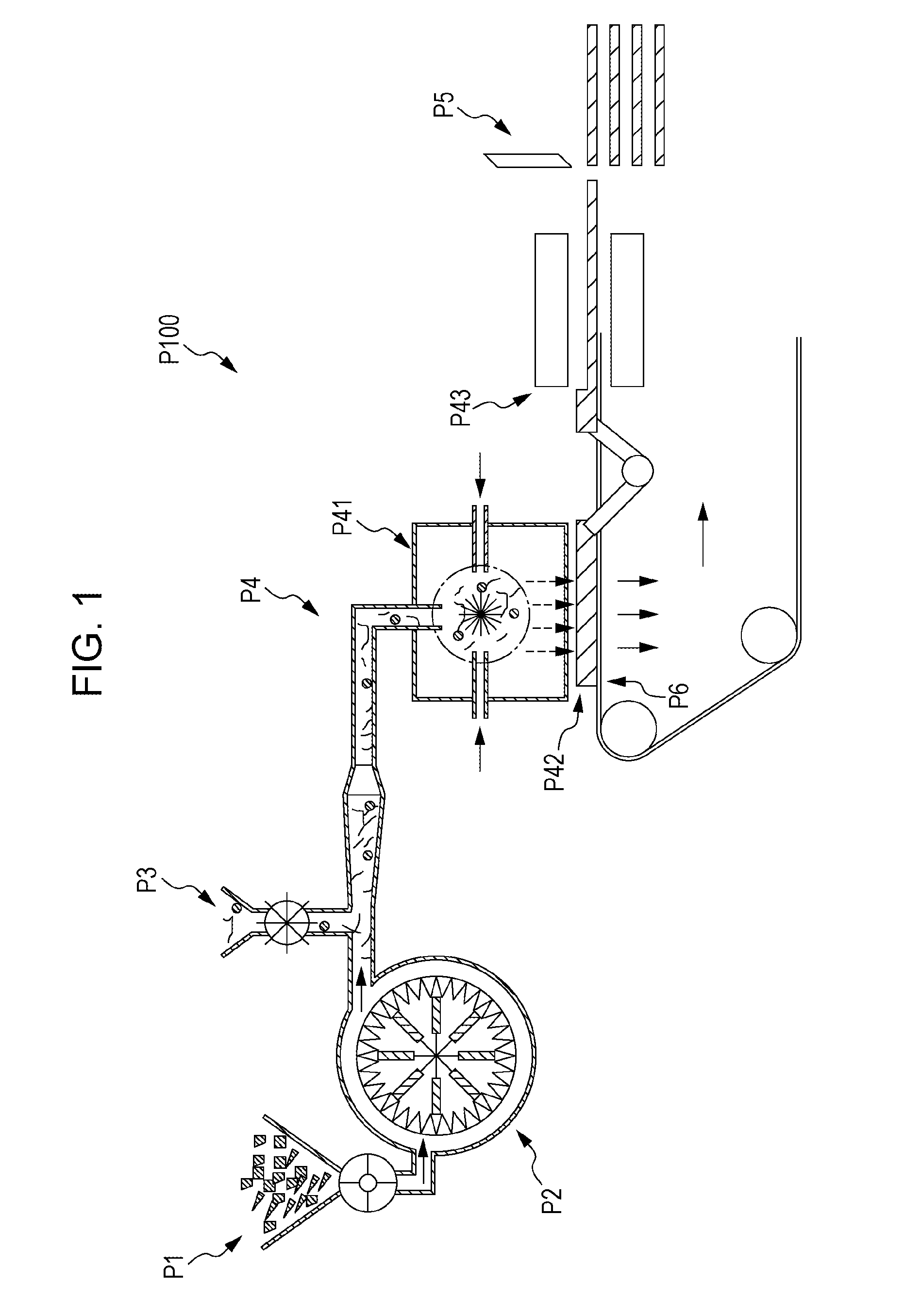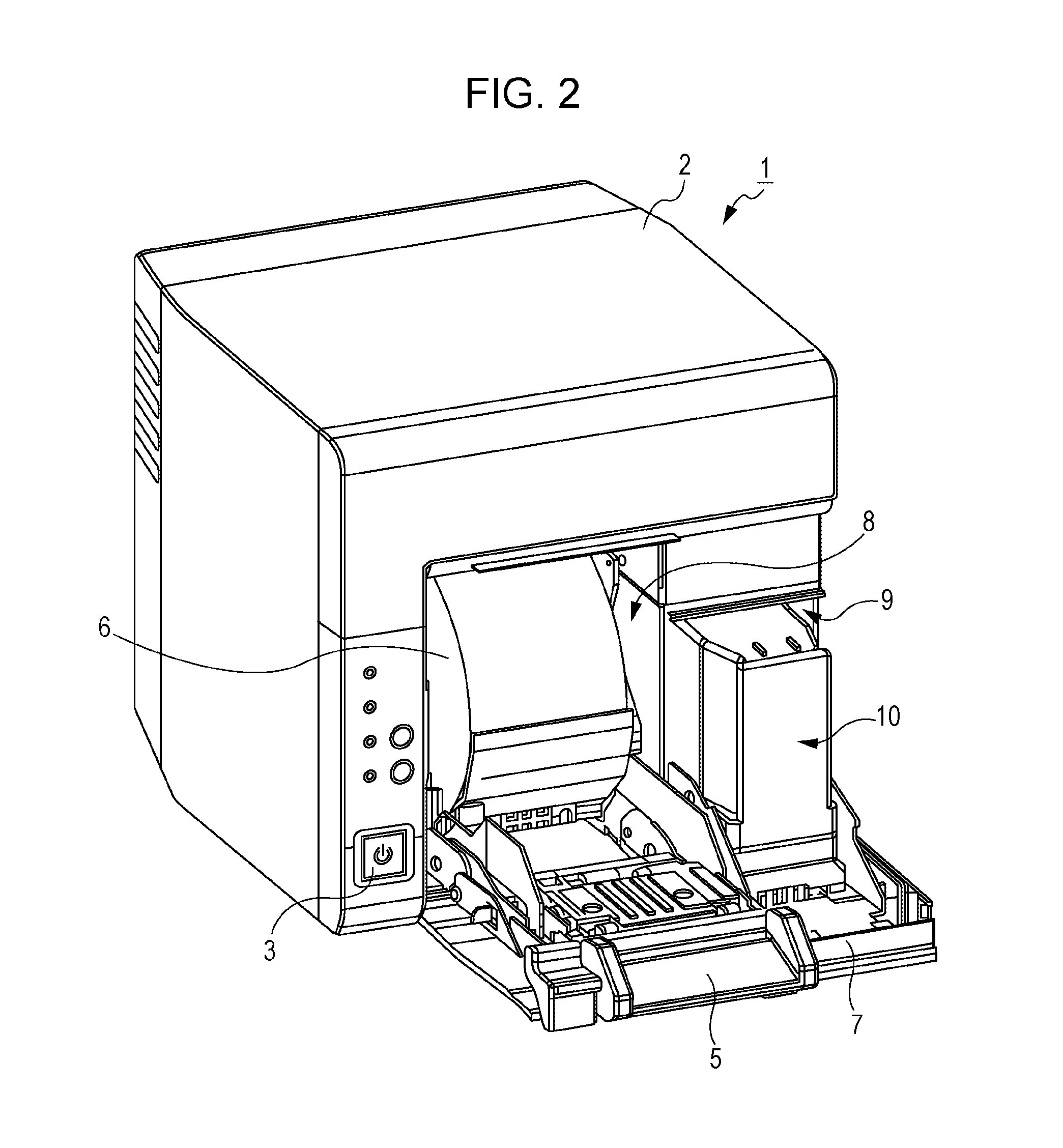Liquid absorbent and printer
a liquid absorbent and printer technology, applied in printing, other chemical processes, chemistry apparatus and processes, etc., can solve the problems of insufficient permeation of ink, inability to absorb waste ink sufficiently fast, inability to absorb ink sufficiently fast, etc., to achieve excellent ink permeation (ability to absorb ink), excellent flame retardancy
- Summary
- Abstract
- Description
- Claims
- Application Information
AI Technical Summary
Benefits of technology
Problems solved by technology
Method used
Image
Examples
embodiment 1
1. Production of Liquid Absorbents
[0197]Liquid absorbents were produced in the following way.
example 1
[0198]A production system of the type illustrated in FIG. 1 was prepared.
Refining
[0199]First, waste paper (the cellulose fiber source) fed from the cellulose fiber feeding unit was refined using refining equipment (in-house produced equipment) as the refining unit.
Mixing
[0200]The waste paper refined at the refining unit (cellulose fiber) was transported while a mixture of the heat-fusible material and the flame-retardant material was fed by the mixture feeding unit. A mixture of the cellulose fiber, the heat-fusible material, and the flame-retardant material was obtained in this way.
Forming
[0201]The obtained mixture was put into the mixing section of the forming unit, and the ingredients were stirred using a stirring gas.
[0202]The mixture was then placed on the transporting unit, which was made of a breathable nonwoven fabric, and sucked onto the transporting unit. By this process the mixture was brought into close contact with the transporting unit and formed into a sheet.
[0203]The...
embodiment 2
1. Production of Liquid Absorbents
[0230]Liquid absorbents were obtained by a production method similar to that for Embodiment 1 using the materials specified in Table 3.
[0231]The heat-fusible material in the liquid absorbents was a mixture of polyester and polyethylene in the form of fiber, and its average fineness and average stable length were 1.7 dtex and 3 mm, respectively. The volume-weighted average particle diameter of the flame-retardant material was measured using HORIBA LA-910.
[0232]
TABLE 3Composition of the liquid absorbentFlame-retardant materialCelluloseAveragefiberHeat-fusible materialparticleAmountAmountdiameterAmount[wt %]Composition[wt %]Composition[μm][wt %]Example 675Polyester / 15Melamine410polyethylenepolyphosphateExample 775Polyester / 15Ammonium1010polyethylenephosphateExample 875Polyester / 15Aluminum810polyethylenehydroxideComparative75Polyester / 15Melamine1510Example 6polyethylenepolyphosphateComparative75Polyester / 15Ammonium2010Example 7polyethylenephosphateCompa...
PUM
| Property | Measurement | Unit |
|---|---|---|
| particle diameter | aaaaa | aaaaa |
| pressure | aaaaa | aaaaa |
| temperature | aaaaa | aaaaa |
Abstract
Description
Claims
Application Information
 Login to View More
Login to View More - R&D
- Intellectual Property
- Life Sciences
- Materials
- Tech Scout
- Unparalleled Data Quality
- Higher Quality Content
- 60% Fewer Hallucinations
Browse by: Latest US Patents, China's latest patents, Technical Efficacy Thesaurus, Application Domain, Technology Topic, Popular Technical Reports.
© 2025 PatSnap. All rights reserved.Legal|Privacy policy|Modern Slavery Act Transparency Statement|Sitemap|About US| Contact US: help@patsnap.com



